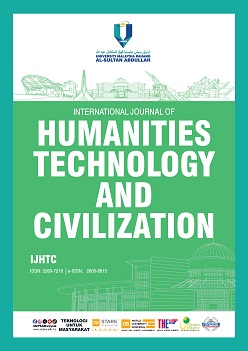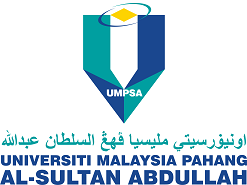SUSTAINABLE DEVELOPMENT GOAL 4 TOWARDS GOLDEN INDONESIA: CROSS-BORDER EDUCATION
DOI:
https://doi.org/10.15282/ijhtc.v10i1.12753Keywords:
Cross-border education, SDG4, Soft skills, Hard skills, Educational technologyAbstract
This study explores the importance of balancing hard skills, soft skills, and trends in educational technology innovation in cross-border education to support the ability to adapt to new environments. This study, using document and conceptual analysis. Indonesia implements the concept of cross-border education for Sustainable Development Goal of four through two programs: student exchange and student exchange between ASEAN countries. This program implementation emphasizes the importance of educational institutions in developing soft skills, improving hard skills, and broadening insights into technological trends in education. The higher education curriculum in Indonesia is expected to meet the needs of the labor market with the need for soft skills of 80%, hard skills of twenty per cent and technological trends and innovation for career success. This study identifies various challenges in the implementation of cross-border education in Indonesia, such as the still minimal weight of soft skills in the university curriculum and there are still many obstacles in technological trends and educational innovations, such as the gap in access to technology, digital skills of teachers and education personnel and the availability of quality learning materials. Educational facilities related to technology and educational innovation in Indonesia still need to be perfectly distributed.
References
Afroze, R., Tamanna, P. E., & Sarker, A. R. (2019). Do soft skills matter? A study on employability of engineering graduates in Bangladesh. Journal of Intercultural Management, 11(3), 21-44.
Aliyeva, G. B. (2023). The use of e-learning tools for teaching English in high school. E-Learning Innovations Journal, 1(2), 39-67.
Almeida, F., & Morais, J. (2023). Strategies for developing soft skills among higher engineering courses. Journal of Education, 203(1), 103-112.
Almeida, F., & Buzády, Z. (2019). Learning entrepreneurship in higher education through flow theory and FLIGBY game. International Journal of Virtual and Personal Learning Environments (IJVPLE), 9(1), 1-15.
Azmi, A. N., Kamin, Y., & Noordin, M. K. (2018). Competencies of engineering graduates: what are the employer’s expectations. International Journal of Engineering & Technology, 7(2.29), 519-523.
Basyuk, N., Hordiienko, O., Marushchak, O., Miroshnychenko, O., & Dmytruk, O. (2023). Socionomic factors of the creation educational environment of the institution higher education as a condition for the formation of professional competences of future specialists’ socionomic professions. Financial and Credit Activity: Problems of Theory and Practice, 1(48), 461–472.
Bialo, E., & Sivin, J. (1990). Report on the Effectiveness of Microcomputers in Schools (ED327177). Software Publishers Association, Washington, DC.
Braun, W. J., Rebollar, R., & Schiller, E. F. (1996). Computer aided planning and design of manual assembly systems. International Journal of Production Research, 34(8), 2317-2333.
Chamorro‐Premuzic, T., Arteche, A., Bremner, A. J., Greven, C., & Furnham, A. (2010). Soft skills in higher education: Importance and improvement ratings as a function of individual differences and academic performance. Educational Psychology, 30(2), 221-241.
Cimatti, B. (2016). Definition, development, and assessment of soft skills and their role in the quality of organizations and enterprises. International Journal for Quality Research, 10(1), 97–130.
Cowan, L. S., & Kodak, T. (2024). Professional skills for behavior analysts: a survey on the proficiency and importance of hard and soft skills. Behavior Analysis in Practice, 17(1), 199-211.
Dabke, D. (2015). Soft skills as a predictor of perceived internship effectiveness and permanent placement opportunity. The IUP Journal of Soft Skills, 9(4), pp. 26–42.
Danilyan, O. G., Dzeban, A. P., Kalinovsky, Y. Y., Kalnytskyi, E. A., & Zhdanenko S. B. (2018). Personal information rights and freedoms within the modern society. Informatologia, 51(1-2), 24-33.
Dean, S. A., & East, J. I. (2019). Soft skills needed for the 21st-century workforce. International Journal of Applied Management and Technology, 18(1), 17–32.
Elfert, M. (2019). Lifelong learning in Sustainable Development Goal 4: What does it mean for UNESCO’s rights-based approach to adult learning and education? International Review of Education, 65(4), 537-556.
Espina-Romero, L. C., Franco, S. L. A., Conde, H. O. D., Guerrero-Alcedo, J. M., Parra, D. E. R., & Ramírez, J. C. R. (2023). Soft skills in personnel training: Report of publications in Scopus, topics explored and future research agenda. Heliyon, 9(4), E15468.
Fey, J., & Heid, M. K. (1984). Imperatives and possibilities for new curricula in secondary school mathematics. Computers in Mathematics Education, 20-29.
Fletcher, S. G. (1983). Dynamic orometrics: A computer-based means of learning about and developing speech by deaf children. American Annals of the Deaf, 128(5), 525-534.
Guerra-Báez, S. P. (2019). A panoramic review of soft skills training in university students. Psicologia Escolar e Educacional, 23, 1–10.
Gutiérrez-Ponce, H., & Wibowo, S. A. (2023). Sustainability Reports and Disclosure of the Sustainable Development Goals (SDGs): Evidence from Indonesian Listed Companies. Sustainability, 15(24), 16919.
Hladoshchuk, O., Saienko, V., Shyshkina, O., Shlieina, L., & Khrapatyi, S. (2023). Activities and development of open universities in the states of Europe. Journal of Curriculum and Teaching, 12(2) Special Issue, 144-153.
IDP Education Australia. 2002. The Global Student Mobility 2025 Report. Canberra: IDP Australia.
Kim, S. W., & Lee, Y. (2023). Investigation into the influence of sociocultural factors on attitudes toward artificial intelligence. Education and Information Technologies, 1–29.
Klaus, P. (2007). The hard truth about soft skills. HarperCollins.
Knight, J. (2008). The Internationalization of higher education in the 21st century: new realities and complexities. In Higher education in Turmoil (pp. 1-18). Brill.Knight, J., (2006). Cross-border education: conceptual confusion and data deficits. Perspectives in Education, 24(4), 15–27.
Koda, Y., & Yuki, T. (2013). The labour market outcomes of two cross-border higher education degree programs between Malaysia and Japan. International Journal of Educational Development, 33(4), 367-379.
Krasnoshchok, I., Kravtsova, T., Zahorodnia, L., Kravchuk, O., & Savelchuk, I. (2024). Assessment of the Impact of Sociocultural Risks of Soft Skills Formation in Different Educational Environments for SDGs. Journal of Lifestyle and SDGs Review, 4(2), e02164-e02164.
Krisnanik, E., Saphira, Q., & Indriana, I. H. (2021). Desain model MBKM dan kolaborasi kerja sama model pentahelix guna meningkatkan daya saing lulusan. Proceeding KONIK (Konferensi Nasional Ilmu Komputer), 5, 138-142.
Lopes, G. C. D., de Farias, W. S., Lopes, P. C. P., da Silva, R. T., & Catapan, A. (2024). The importance of cross-border education in contexts of collaboration between countries according to the SDGS. Journal of Lifestyle and SDGs Review, 4(2), e02054-e02054.
Microsoft. (2025). Copilot (GPT-4). https://copilot.microsoft.com/
Mykytuk, O., Tiurina, T., Yukhymenko-Nazaruk, I., Voloshyn, M., Babkina М., & Yaremko, H. (2023). Features of the formation of pedagogical competence of a teacher of the university of banking. Financial and Credit Activity Problems of Theory and Practice, 2(49), 469–480.
OECD and World Bank, 2007. Cross-border Tertiary Education: A Way Towards Capacity Development, Paris.
Patacsil, F., Lourrine, C., & Tablatin, C. L. (2017). Exploring the importance of soft and hard skills as perceived by IT internship students and industry: A gap analysis. Journal of Technology and Science Education, 7(3), 347–368.
Robertson, R. (1987). Globalization theory and civilization analysis. Comparative Civilizations Review, 17(17), 3.
Robles, M. M. (2012). Executive perceptions of the top 10 soft skills needed in today’s workplace. Business Communication Quarterly, 75(4), 453–465.
Rukman, W. Y., Urath, S., Harini, H., Ausat, A. M. A., & Suherlan, S. (2023). Philosophy education is a means of developing students' soft skills. Edumaspul: Jurnal Pendidikan, 7(1), 281-286.
Sá, M. J., & Serpa, S. (2018). Transversal competencies: Their importance and learning processes by higher education students. Education Sciences, 8, 1–12.
Schooley, R. (2017). Why are soft skills missing in today's applicants (Doctoral dissertation, Murray State University).
Schulz, B. (2008). The importance of soft skills: Education beyond academic knowledge. Journal of Language and Communication, 6, 146–154.
Schulze, J., Schultze, M., West, S. G., & Krumm, S. (2017). The knowledge, skills, abilities, and other characteristics required for face-to-face versus computer-mediated communication: Similar or distinct constructs? Journal of Business and Psychology, 32, 283–300.
Succi, C., & Wieandt, M. (2019). Walk the talk: Soft skills’ assessment of graduates. European Journal of Management and Business Economics, 28(2), 114–125.
Siann, G., Macleod, H., Glissov, P., & Durndell, A. (1990). The effect of computer uses on gender differences in attitudes to computers. Computers & Education, 14(2), 183-191.
Sukmana, O. (2024). Analisis Permasalahan Belajar Matematika Siswa SD Negeri Cikampek Kota. Jurnal Bintang Pendidikan Indonesia, 2(2), 81-87.
Timotheou, S., Miliou, O., Dimitriadis, Y., Sobrino, S. V., Giannoutsou, N., Cachia, R., ... & Ioannou, A. (2023). Impacts of digital technologies on education and factors influencing schools' digital capacity and transformation: A literature review. Education and Information Technologies, 28(6), 6695-6726.
Tropin, Y., Latyshev, M., Saienko, V., Holovach, I., Rybak, L., & Tolchieva, H. (2021). Improve wrestlers' technical and tactical preparation by considering an individual combat style. Sport Mont, 19(2), 2328.
Volkova, N., Zinukova, N., Vlasenko, K., & Korobeinikova, T. (2020). Soft skills, their development and mastering among post graduate students. In SHS Web of Conferences (vol. 75, p. 04002). EDP Sciences.
Wepner, S. B. (1990). Computers, reading software, and at-risk eighth graders. Journal of Reading, 34(4), 264-268.
Yong, B. P. P., & Ling, Y. L. (2023). Skills gap: The importance of soft skills in graduate employability as perceived by employers and graduates. Online Journal for TVET Practitioners, 8(1), 25-42.
Downloads
Published
Issue
Section
License
Copyright (c) 2025 The Author(s)

This work is licensed under a Creative Commons Attribution-NonCommercial 4.0 International License.




